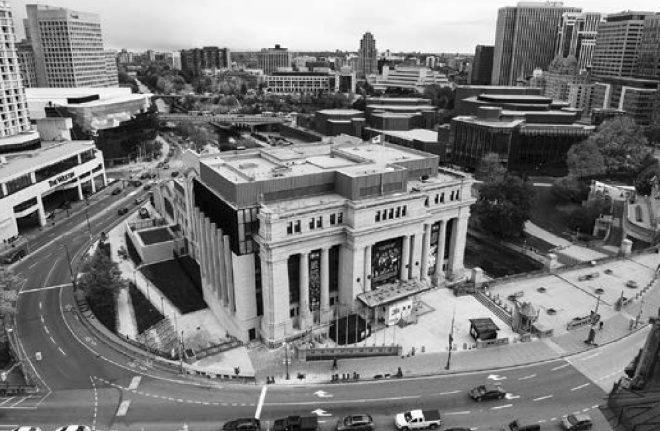Former Union Station is New Senate of Canada
HERITAGE OTTAWA NEWSLETTER (page 4), By Carolyn Quinn
Last December I had the privilege of touring the new Senate of Canada Building with some of the talented and committed people who helped make the transformation of Ottawa’s old Union Station possible. As well as adapting the historic Rideau Street landmark to meet the requirements of a functioning Senate, the six year rehabilitation project restored its most spectacular interior spaces.
A Beaux-Arts gem completed in 1912 as Ottawa’s central train station, the building served as a transportation hub until 1966 when rail was removed from the downtown core.
In what seems like twisted logic, Union Station was then slated for demolition to make way for cars and buses to park during the 1967 Centennial. Destroy history to celebrate heritage. Thankfully, pioneering advocacy efforts by Heritage Ottawa’s founders saved the noble pile, which allowed for its renovation two years later into the Government of Canada Conference Centre.
Forty-plus years on, the deteriorated heritage site has returned to its former glory, thanks to senators who saw an opportunity to reuse an existing building rather than erect an interim Senate Chamber in the courtyard of the East Block. Rob Wright, Assistant Deputy Minister for Public Services and Procurement Canada who welcomed our tour, told the group that the decision bumped the former Union Station from the bottom of the list of federally-owned heritage buildings in need of refurbishment to the top, while saving taxpayers some $200 million.
The upgrades are impressive. Diamond Schmitt Architects of Toronto and KWC Architects of Ottawa oversaw the challenging project. The design integrates seismic reinforcements, barrier-free access, Green Globe certified energy-efficient technologies — including a green roof, water-saving plumbing fixtures and 1912 chandeliers retrieved from storage and refitted with LED lighting — as well as the Senate Chamber’s new broadcasting and acoustic requirements.
But the highlight of the project is the revitalization of the former train station’s grand public spaces. Two new committee rooms and a mezzanine level were added to the monumental waiting room and the concourse converted into the temporary Senate Chamber. ERA Architects brought heritage conservation expertise to the meticulous restoration of the vaulted plaster coffered ceiling, marble floors, faux travertine panels and columns, and arched cast-iron Diocletian windows.
For the first time in decades, natural light floods into the hall. Original elements were refurbished providing visual reminders of the building’s transportation history, like the station’s clock over the entrance to the former ticketing block and the mahogany high-back bench — one of 12 that once sat here — donated by the Museum of Science and Technology.
The Senate Chamber features a 20-metre-long illuminated skylight uncovered during the restoration. The historic senators’ desks were carefully identified, moved from the Red Chamber in Centre Block, and reinstated in their rightful location inside the temporary chamber. The introduction of new materials and craftsmanship are artistically juxtaposed against the classically inspired ornamentation. All 10 varieties of maple leaves found in Canada are depicted in the chamber’s walnut entry doors and the translucent glass panels that separate the antechamber.
The traditional carving skills of Phil White, the Dominion Sculptor of Canada, were merged with digital techniques developed by Carleton University’s Immersive Media Studio under the direction of Dr. Stephen Fei; an innovation developed here and exported around the world. The resulting carved walnut panels depicting Canadian flags that flank the Senate thrones create the illusion of movement, as though the flags are fluttering in the wind.
The overall approach to this stunning revitalization focused on its reversibility. The Senate is scheduled to return to Centre Block in 2030, but the building will be ready to adapt to a new function. You can see for yourself. Guided tours of the award-winning new Senate of Canada Building can be scheduled at visitparliament.ca
Carolyn Quinn is member of Ottawa’s Built Heritage Sub-Committee as well as Board member of Heritage Ottawa.
